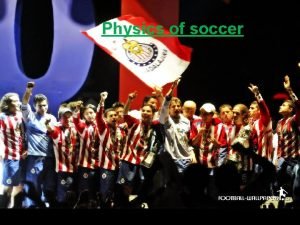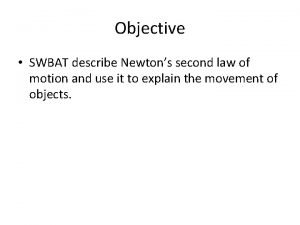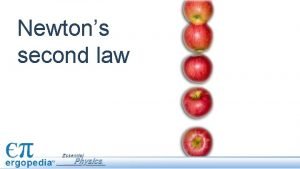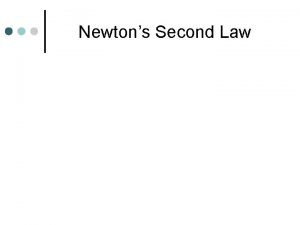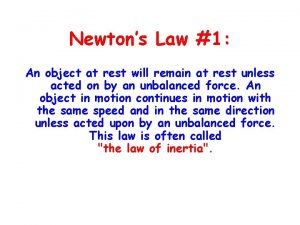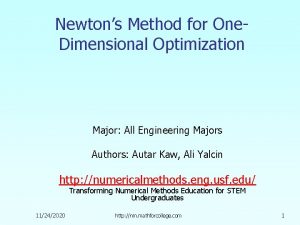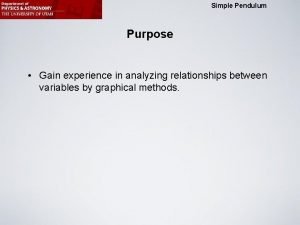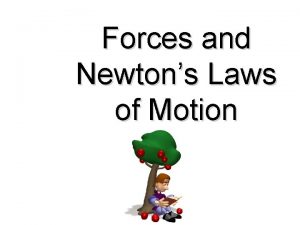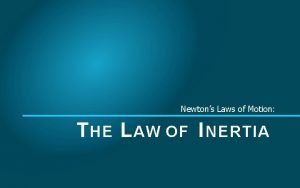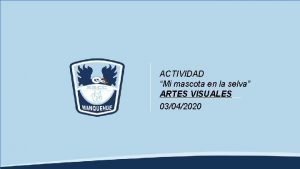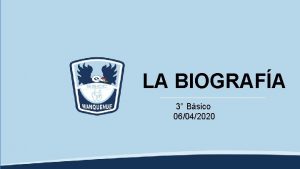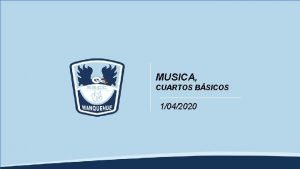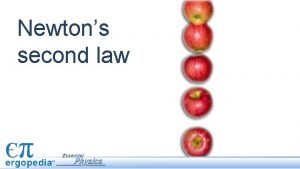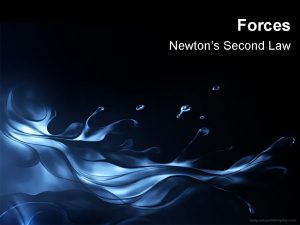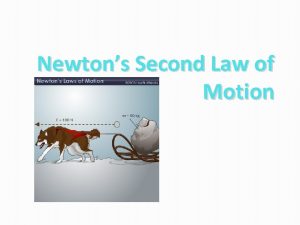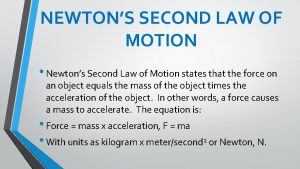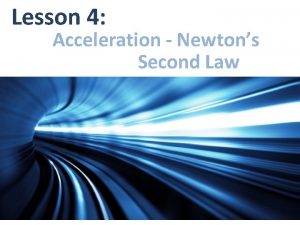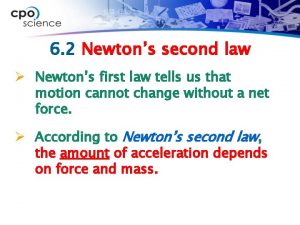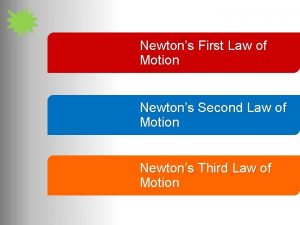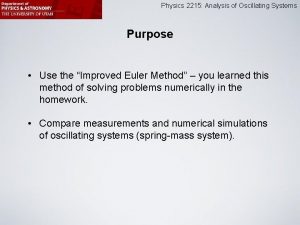Physics 2215 Newtons Second Law Purpose Use numerical
















- Slides: 16

Physics 2215: Newton’s Second Law Purpose • Use numerical integration to determine whether a physical system involved in a collision obeys Newton’s Second Law.

Physics 2215: Newton’s Second Law , where Net force acting on object

Physics 2215: Newton’s Second Law, in case you didn’t recognize it , if m = constant (dm/dt=0)

Physics 2215: Newton’s Second Law Impulse “Impulse” Change in momentum Impulse = Change in Momentum

Physics 2215: Newton’s Second Law The Basic Idea of this Lab Measure momentum change using the photogate Numerically integrate the measurements from the force sensor during the collision. (vinitial before collision, and vfinal after collision) Compare

Physics 2215: Newton’s Second Law Setup for Elastic Collision flat bumper A bit of clay as a counterweight photogate spring bumper with needle eraser Force Sensor Glider Air Track

Physics 2215: Newton’s Second Law Elastic Collision – Measuring vinitial Glider Force Sensor

Physics 2215: Newton’s Second Law Elastic Collision – Measuring the force during the collision Glider Force Sensor

Physics 2215: Newton’s Second Law Elastic Collision – Measuring vfinal (going through the photogate in the other direction) vfinal Glider Force Sensor

Physics 2215: Newton’s Second Law Setup for Inelastic Collision photogate Modeling clay on hook (don’t use spring) Modeling clay Force Sensor Glider Air Track

Physics 2215: Newton’s Second Law Inelastic Collision – Measuring vinitial Glider Force Sensor

Physics 2215: Newton’s Second Law Inelastic Collision – Measuring the force during the collision Glider Force Sensor

Physics 2215: Newton’s Second Law Inelastic Collision : vfinal=0 Glider Force Sensor

Physics 2215: Newton’s Second Law The force-time diagram during the collision force collision time Before collision: Force = 0 (if tared properly) After collision: Force = 0 (if tared properly)

Physics 2215: Newton’s Second Law The force-time diagram during the collision force collision time Discrete measurements in certain time intervals time get recorded also in a table in Capstone force

Physics 2215: Newton’s Second Law Numerical Integration using the Table Data time (in s) 0. 00 0. 01 0. 02 0. 03 … … … 0. 12 0. 13 … Force (in N) 0. 00 0. 01 0. 02 … … … 0. 03 0. 01 0. 00 before collision (f=0) Export these data to Excel. Integrate in Excel using the trapezoidal rule (see homework). after collision (f=0)
 Newton's first law of motion in soccer
Newton's first law of motion in soccer Describe newtons second law
Describe newtons second law Newton's 2nd law
Newton's 2nd law Newton 2 law example
Newton 2 law example Newtons second law
Newtons second law Newtons second law example
Newtons second law example Newton's first law and second law and third law
Newton's first law and second law and third law Si unit of newton's first law
Si unit of newton's first law Newtons second kaw
Newtons second kaw Newtons second kaw
Newtons second kaw Newtons second laq
Newtons second laq Newtons second lw
Newtons second lw Newtons second lwa
Newtons second lwa Newtons first aw
Newtons first aw Padre damian de veuster 2215
Padre damian de veuster 2215 Estructura de una biografia
Estructura de una biografia Padre damian de veuster 2215
Padre damian de veuster 2215
